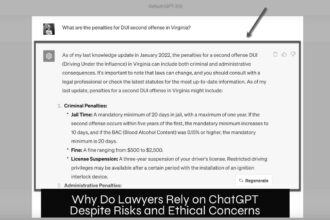What if your next encounter with technology felt less like a transaction and more like a conversation? As artificial intelligence becomes an ever-present part of our daily lives, California is stepping up to redefine the relationship between human beings and their digital counterparts with its groundbreaking AI Bill of Rights. This initiative aims to safeguard civil liberties while ensuring that AI technologies serve everyone equitably.
As the echoes of algorithmic bias from tech giants like Amazon remind us, this legislation is not just about policies; it’s about weaving a fabric where fairness and transparency are the threads that bind us to our future.
Table of Contents
ToggleWhat is the significance of California’s AI Bill of Rights?
The California AI Bill of Rights represents a pivotal legislative effort designed to protect civil liberties and ensure equitable access to artificial intelligence technologies. This groundbreaking initiative underscores the necessity of addressing issues such as algorithmic bias that can result in discriminatory practices, as seen in the example of Amazon’s recruitment system which was found to favor male candidates over female applicants.
By establishing a framework that promotes transparency, fairness, and accountability, the AI Bill of Rights not only seeks to prevent historical injustices but also aims to foster a culture of ethical AI development. It recognizes that as AI systems become increasingly integrated into our daily lives, from hiring processes to social services, their impact on societal norms and values will be profound. Therefore, the legislation incentivizes the creation of algorithms that are not only technically sound but also socially responsible.
Moreover, the bill empowers individuals by granting them rights concerning their data and the decisions made by AI systems, ensuring that users are informed and can contest automated decisions that significantly affect them. This commitment to user rights is essential in a digital landscape where personal data is often exploited without adequate oversight.
Ultimately, the California AI Bill of Rights is a forward-thinking response to the evolving challenges posed by AI technologies. It serves as a model for other states and countries looking to enact comprehensive regulations that prioritize civil rights and equitable access while encouraging responsible innovation. As we continue to navigate the complexities of AI, this legislation sets a benchmark for ensuring that technological advances enhance, rather than impede, the fundamental principles of justice and equality in society.
How does California legislation address the issue of deepfakes?
California’s recent legislative actions are pivotal in addressing the growing concern surrounding deepfakes, particularly those that present sexually explicit content and promote misinformation during elections. Under the leadership of Governor Gavin Newsom, a series of bills have been signed into law that not only mandate the use of AI watermarking but also emphasize the protection of individuals’ digital likenesses. This multifaceted strategy is designed to significantly reduce the harmful effects associated with deepfake technology.
Firstly, the requirement for AI watermarking acts as an essential tool for identifying the authenticity of digital content, ensuring that audiences can discern between genuine and manipulated media. This is particularly crucial in today’s digital landscape, where disinformation can rapidly spread and impact societal perceptions and actions. By implementing such measures, the legislation serves as a safeguard against the malicious use of deepfakes, effectively addressing concerns over privacy violations and the misuse of someone’s likeness without consent.
Moreover, the law recognizes the potential of deepfakes to manipulate public opinion, especially in the context of elections. The focused approach to combating AI-generated misinformation is significant, as it aims to protect the integrity of democratic processes by preventing the spread of false or misleading content that could skew public perception and behavior. With the rise of deepfake technology, even subtle manipulations can dramatically affect voter decisions; thus, these legislative measures are crucial in maintaining transparency and trust in electoral systems.
The comprehensive nature of this legislation illustrates a commitment to both innovating new technologies and responsibly managing their societal implications. By combining protective measures with proactive strategies to mitigate risks, California is setting a groundbreaking precedent for other states and countries to follow. These legislative efforts not only aim to curb harmful applications of deepfake technology but also strive to empower individuals to reclaim control over their digital identities and foster a healthier information ecosystem.
What role do experts play in California’s AI regulations?
Experts play a crucial role in shaping California’s AI regulations by providing essential insights and guidance on the responsible use of generative AI technologies. Notable figures like Dr. Fei-Fei Li and Tino Cuéllar have been engaged to systematically evaluate the complexities of AI deployment, considering both the potential advantages and the inherent risks associated with these technologies.
This collaborative effort emphasizes a dual focus: encouraging innovation while safeguarding public interests. By integrating the expertise of these leading professionals, California aims to establish a regulatory framework that is not only compliant with legal standards but also informed by extensive research and real-world applications. This approach fosters a culture of accountability and transparency, ensuring that the regulations can adapt to ongoing advancements in AI and mitigate any adverse effects on society.
Furthermore, the involvement of such experts reflects California’s proactive stance on AI governance. It signals to stakeholders that the state values informed decision-making, prioritizing scientific evidence and ethical considerations in the implementation of AI technologies. Ultimately, the insights drawn from these experts serve as a foundation for creating effective policies that balance technological advancement with the need for public safety and ethical responsibility, setting a vital precedent for other regions considering similar initiatives.
How does California’s AI legislation reflect its leadership in the tech industry?
California’s AI legislation exemplifies the state’s leadership in the tech industry by positioning it as a global hub for artificial intelligence innovation. Home to 32 of the world’s top 50 AI companies, California is not only a breeding ground for technological advancements but also a pioneer in establishing robust frameworks for AI governance.
The state’s proactive legislative measures—including stringent guidelines for training large-scale AI models—signal its commitment to setting national and international benchmarks for responsible AI practices. By addressing critical issues such as transparency, accountability, and ethical considerations in AI deployment, California is reinforcing its role as a trendsetter in tech policy.
For example, the California AI Bill of Rights aims to ensure that AI technologies remain equitable and just, promoting fair access and mitigating algorithmic biases that have historically contributed to social inequities. Such initiatives are likely to influence similar legislative efforts in other states and even internationally, as they reflect an understanding of the rapidly evolving nature of AI and its implications for society.
As California continues to shape the future of AI regulation, its actions will serve as a foundational model for balancing innovation with public safety and ethical responsibility. This strategic approach not only enhances California’s reputation as a leader in technology but also encourages a collective dialogue about the best practices needed to navigate the complexities of AI in our modern world, thereby impacting governance well beyond its borders.
What are the criteria for AI developers under California’s SB 1047?
California’s SB 1047 sets forth rigorous criteria for developers of significant AI models, particularly those with training costs surpassing $100 million. To ensure the responsible development and deployment of such powerful technologies, developers must adhere to a series of comprehensive requirements.
These requirements include:
- Establishing Safety Protocols: Developers are mandated to implement robust safety measures that not only address operational risks but also account for potential misuse of the AI systems.
- Annual Audits: To promote ongoing compliance and improvement, developers must submit to annual audits that evaluate the effectiveness of their safety protocols and adherence to ethical guidelines.
- Public Disclosure: The bill requires developers to publicly disclose their safety measures, fostering an environment of transparency and enabling stakeholders to understand the risk management strategies in place.
By enforcing such stringent benchmarks, SB 1047 aims to enhance accountability and mitigate the critical risks associated with advanced AI systems, promoting public trust and ethical considerations in AI development.
This legislation not only reflects California’s commitment to responsible innovation but also sets a precedent for other jurisdictions to adopt similar measures, ensuring that as technology evolves, its growth does not come at the expense of safety or societal welfare.
Which specific areas does California’s AI regulation cover?
California’s recent suite of AI legislation encompasses a broad spectrum of topics, reflecting a comprehensive approach to regulating artificial intelligence. Key areas addressed include the regulation of deepfakes, which aims to combat misinformation and protect individual likeness rights; enhanced digital safety measures for children to safeguard their online experiences from potential harms associated with AI technologies; and the responsible integration of AI in workplace settings to ensure fair treatment and sound ethical practices.
The legislation is particularly notable for its commitment to protecting individuals’ rights while proactively mitigating the risks associated with emerging AI technologies. This is achieved through mandatory assessments that evaluate potential AI risks to critical infrastructure. Such assessments are vital for identifying vulnerabilities and ensuring that public safety remains a priority as technological advancements unfold. By adopting these multifaceted measures, California is positioning itself as a leader in AI governance, seeking to create a regulatory environment that encourages innovation while safeguarding citizens against potential threats posed by artificial intelligence.
In doing so, the state’s legislation fosters a culture of accountability and responsibility, encouraging developers and businesses to adhere to ethical standards and prioritize the well-being of individuals and communities. As California navigates the complexities of AI regulation, its efforts are likely to influence other jurisdictions, both nationally and internationally, to pursue comparable initiatives aimed at harnessing the benefits of AI while protecting society from its risks.
What impact might California’s AI regulations have on the tech industry?
California’s stringent AI regulations, particularly through SB 1047, are likely to have a profound impact on the tech industry by necessitating a fundamental shift in how AI developers approach model training and deployment.
The enforcement of rigorous testing and governance requirements combined with mandatory reporting obligations could lead to increased operational costs and bureaucratic challenges for companies. For instance, the requirement for annual audits and public disclosures might compel developers to allocate more resources towards compliance, potentially slowing down innovation in the short term.
However, these regulatory frameworks are designed to foster public trust and ensure that the evolution of AI technologies is conducted responsibly. As a result, companies that embrace these regulations may emerge with a competitive advantage, as consumers and stakeholders increasingly prioritize ethical considerations in their technology choices. This proactive approach positions the industry for safer development practices, ultimately creating a more responsible tech ecosystem that prioritizes societal welfare.
Furthermore, by setting a precedent for accountability and transparency, California’s regulations could influence national and global standards, leading to a ripple effect where companies adapt their practices not only in California but worldwide. This trend towards enhanced responsibility could help mitigate risks associated with AI technologies, promoting a culture that values both innovation and ethical integrity in the tech industry.





